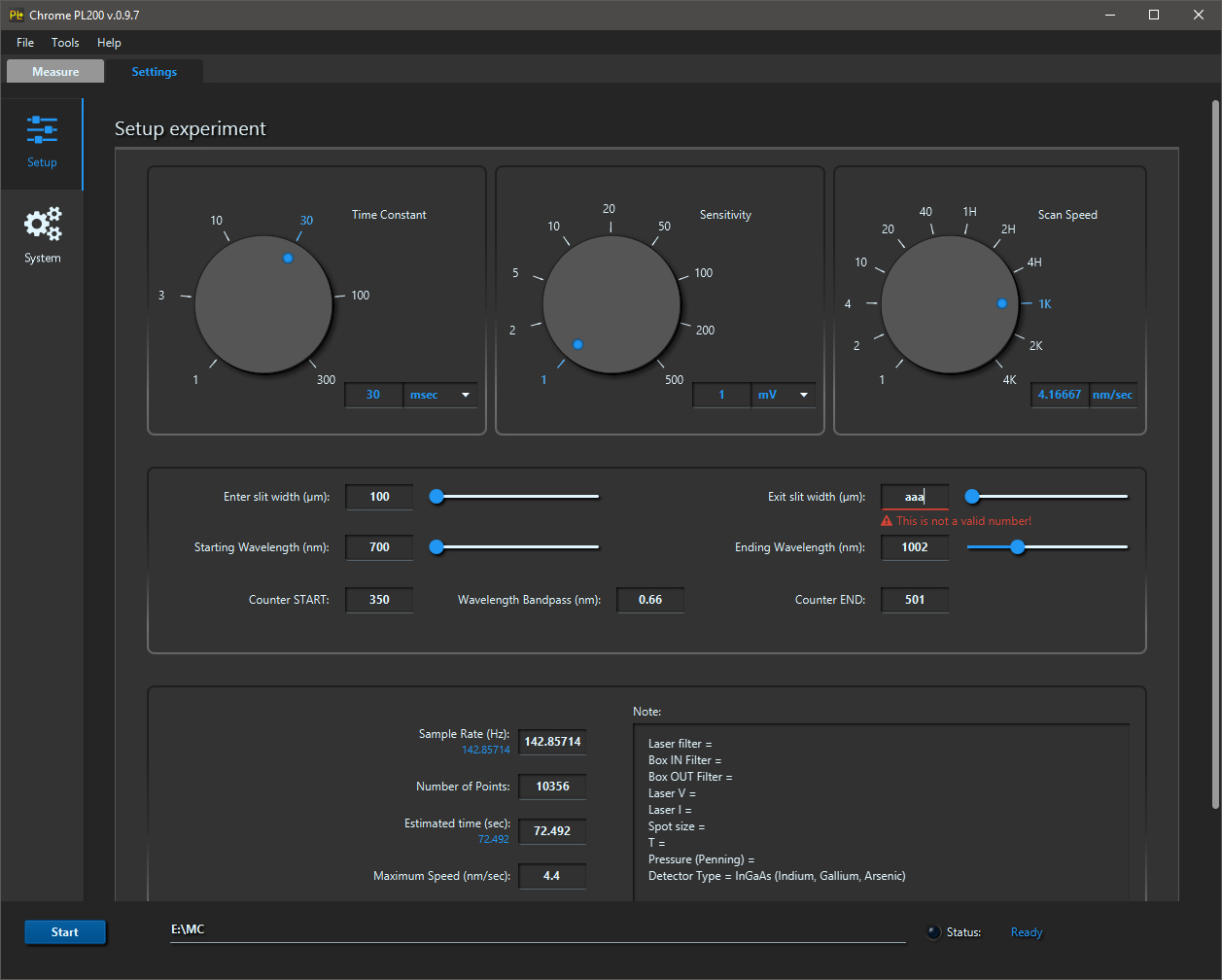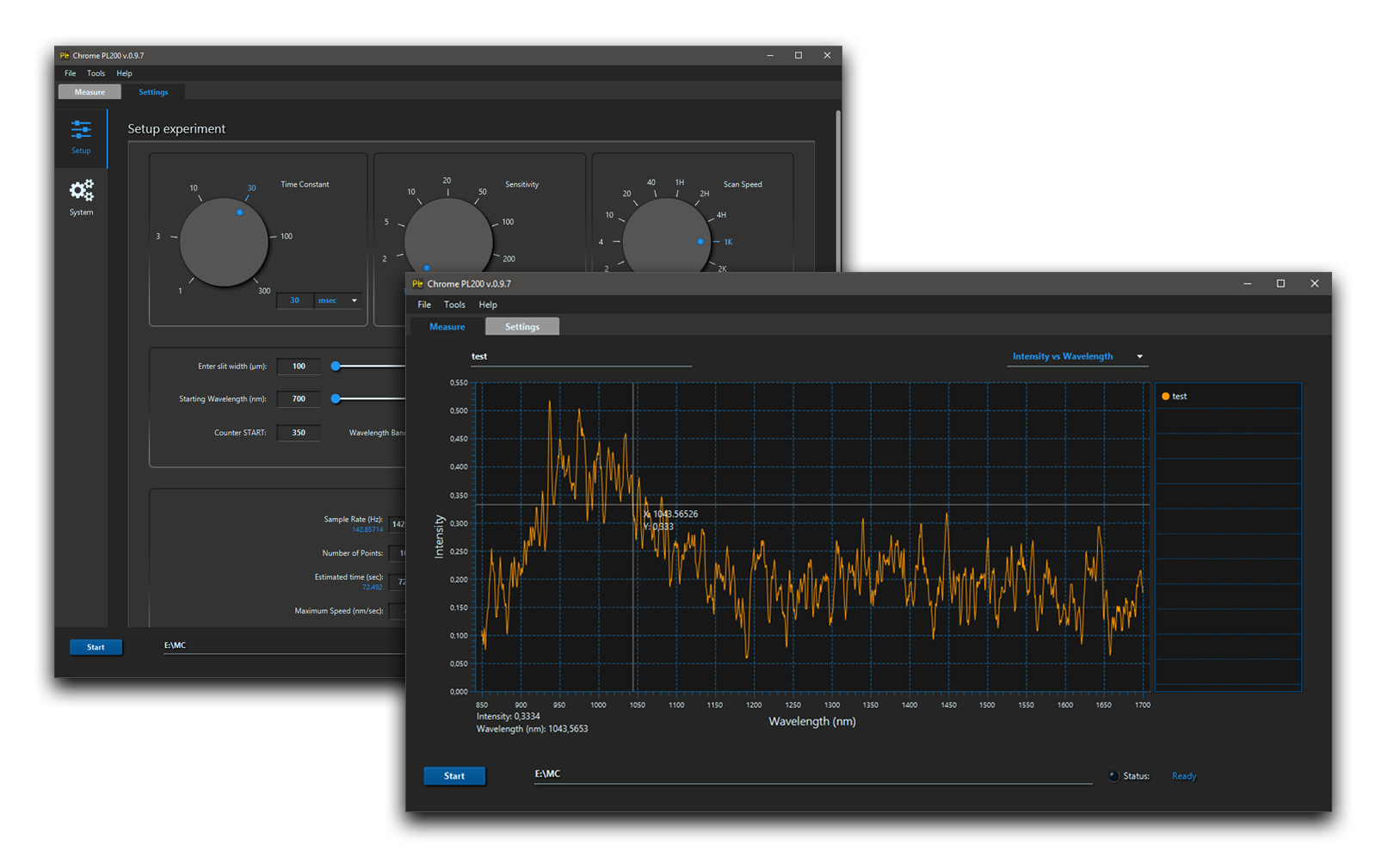About the Application
This Application was made to create a software control interface for an old but extremely reliable instrument able to measure the photoluminescence emission of compounds. The challenge was to build a system able to drive this instrument so that the user doesn’t need to do each step manually so as to be able to reduce the human error. The controller, provided of a SAMD21G18 microcontroller and programmed by me in C++, is able to start and stop the measure and to collect the data measured by the photoluminescence system. This are than sent to the computer through an USB interface and elaborate. The application is provided of Ramer-Douglas-Peucker algorithm that allows to load a huge amount of data without performance issues, by reducing the number of points of the only the part of initial data set currently visible on the chart. This means that while performing a zoom-in more points are visible in the interesting region as shown in the following picture.
Chrome PL200 is a fully functional Application which I made from scratch for Iridium Scientific Sas..
Skill level: advanced.

Setting up an experiment
The application is provided with a wide set of settings that allow to the user of setting up many types of experiment that are limited only from the physic limits of photoluminescence system. This make it suitable for satisfy the needs of the most demanding user. Each data inserted are automatically subjected to validation before to be elaborate or saved and sent to the controller which executes the commands, without any interaction on user side, assuring that no data are lost. An alert message is shown when a user type a wrong data.

Exporting data
All experimental data are collected by the system and automatically saved in two files when an experiment is stopped. One contains the data collected which are easily importable in third part software of chart elaboration and one containing the parameters and settings used in that experiment. This can be exported and following loaded whenever user needed it.
